Data analytics
Big data
AI tools
Security practices
Marketing strategies
Product strategy
E-Commerce Solutions
Real project examples
Big Data Analytics: How Predictive Insights Drive Business Growth
Nadiia Sidenko
2024-09-18
Big data analytics and predictive insights have become essential for businesses aiming to optimize operations, improve decision-making, and drive sustainable growth. In today's competitive landscape, companies implementing business analytics solutions gain a significant edge by transforming raw data into actionable intelligence. From enhancing customer experiences to streamlining operations and forecasting market trends, data-driven decision-making is revolutionizing industries across the globe.
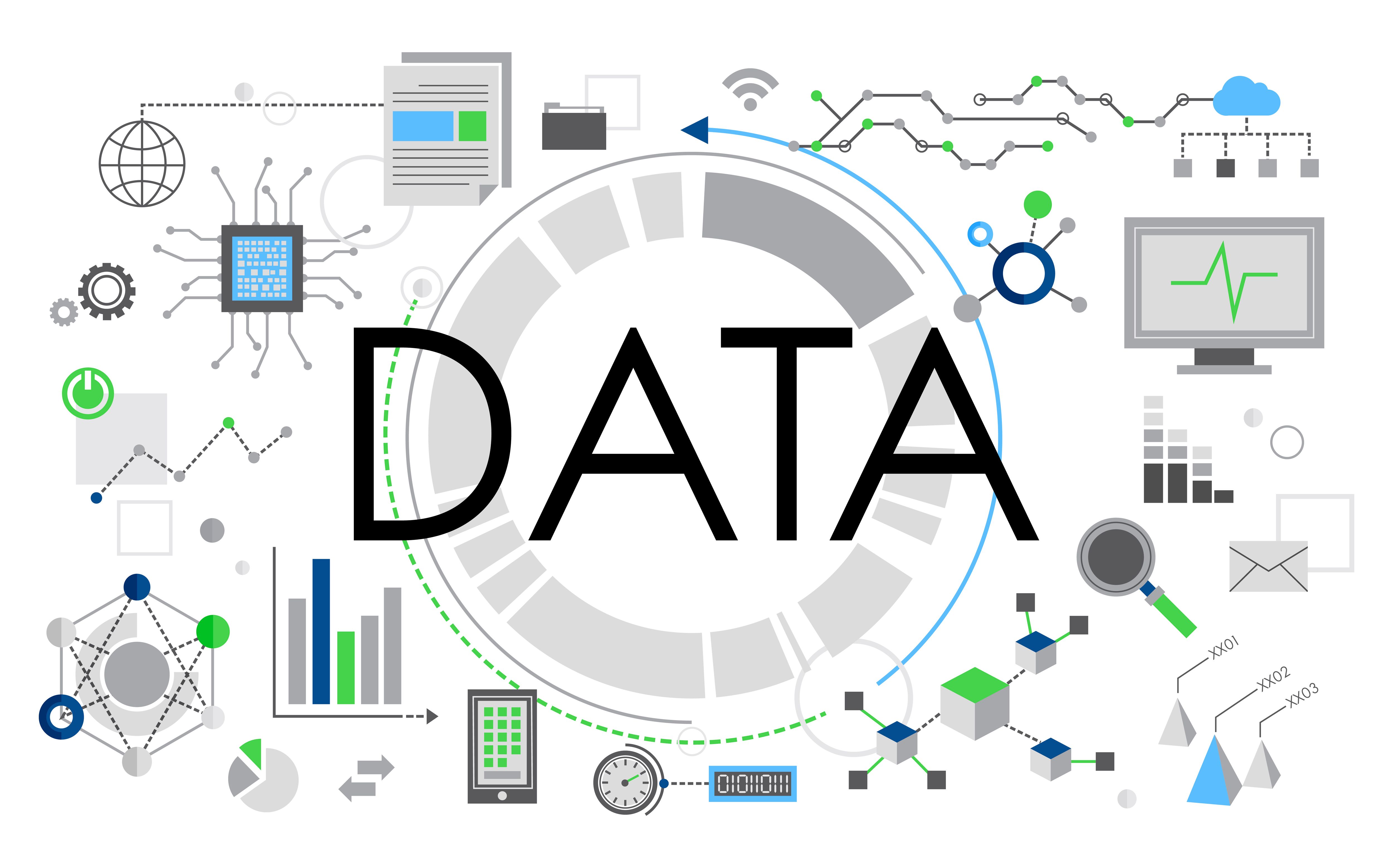
How Predictive Analytics Enhances Business Decision-Making
From Guesswork to Data-Driven Decisions
Modern businesses can no longer rely on intuition alone to stay competitive. Big data analytics helps organizations detect patterns, identify inefficiencies, and anticipate future challenges with unprecedented accuracy. By implementing predictive analytics tools, companies can make informed decisions based on data rather than assumptions.
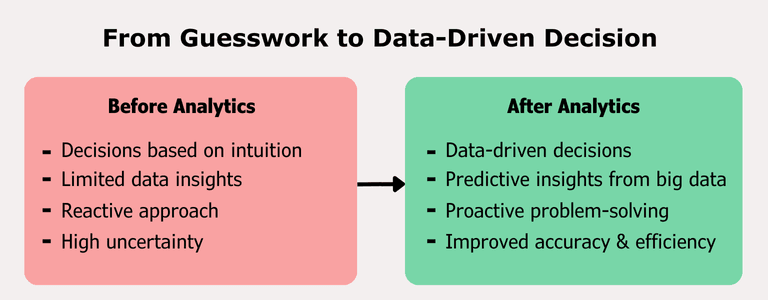
Data-driven decision-making enables executives to:
- Validate strategic initiatives with empirical evidence
- Identify emerging opportunities before competitors
- Allocate resources more efficiently based on projected outcomes
- Measure the impact of business decisions with precision
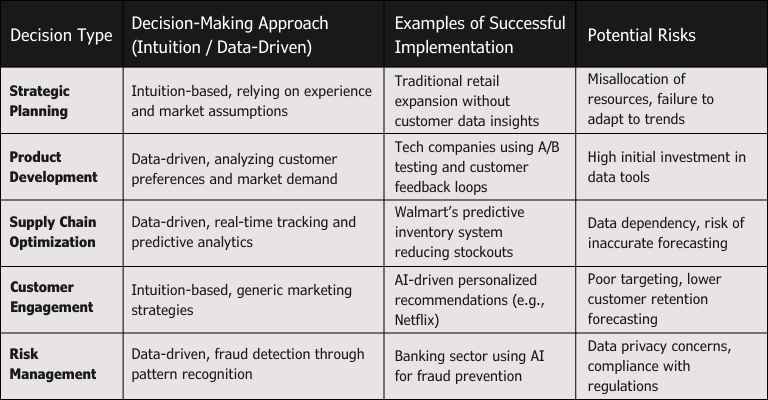
Optimizing Manufacturing Processes
Manufacturers use predictive analytics to monitor equipment performance, forecast potential failures, and schedule proactive maintenance. This data-driven approach minimizes costly downtime, extends equipment lifespan, and significantly increases operational efficiency.
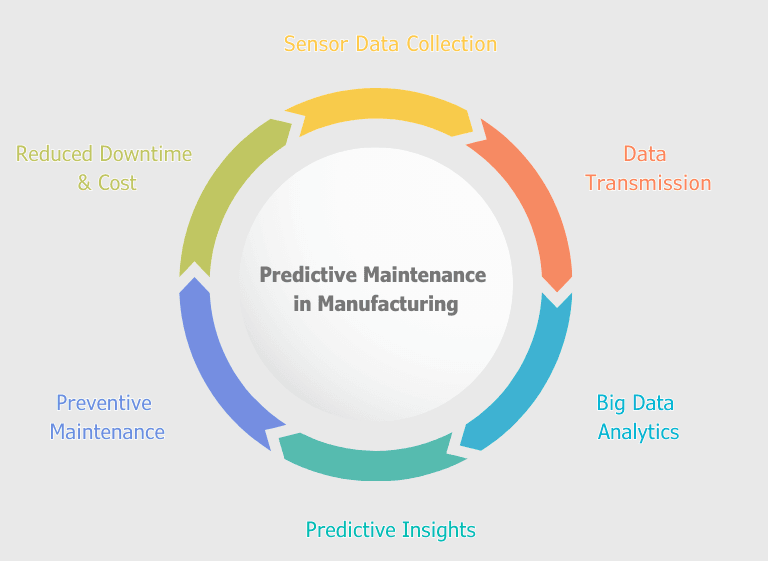
For example, General Electric uses sensors and predictive analytics to monitor jet engines, reducing maintenance costs and increasing aircraft availability.
Smarter Product Development
Companies developing new products rely on business intelligence (BI) tools to analyze market demand, customer behavior, and competitor activity. These insights ensure product development aligns with real market needs, reducing the risk of failed launches and improving time-to-market.
Learn how BI tools drive software development success by integrating business intelligence consulting into your product strategy.
Using Data Analytics to Understand Customer Behavior
Predictive analytics helps businesses gain deeper insights into customer preferences, purchasing patterns, and engagement behaviors, enabling more targeted marketing efforts and improved customer experiences.
Enhancing E-Commerce Strategies
Online retailers analyze shopping cart abandonment rates, browsing behavior, and customer journey data to improve conversion rates. By optimizing user experience based on these insights, they reduce drop-offs and increase sales. Data analytics solutions allow e-commerce businesses to:
- Identify friction points in the checkout process
- Personalize product recommendations based on browsing history
- Optimize pricing strategies based on demand and competitor analysis
- Improve inventory management to ensure product availability
AI-Powered Personalization
Advanced AI for data analytics enables businesses to create hyper-personalized marketing campaigns based on real-time customer interactions. Customer data analytics enables companies to:
- Develop targeted email campaigns with higher engagement rates
- Create dynamic website content that adapts to individual user preferences
- Implement chatbots that provide personalized customer service
- Deliver relevant product recommendations that increase average order value
Netflix uses AI-powered analytics to analyze viewing habits and preferences, helping them recommend content that keeps subscribers engaged and reduces churn.
Improving Supply Chain Efficiency with Real-Time Data
Logistics and supply chain management depend on accurate forecasting and timely adjustments. Real-time analytics enables businesses to predict delays, optimize routes, and enhance inventory control through IoT devices and real-time tracking systems.
Walmart's Predictive Inventory Management
Retail giant Walmart uses big data analytics to forecast demand fluctuations, optimize stock levels, and ensure product availability. By analyzing sales history, seasonal trends, and even weather patterns, Walmart prevents stock shortages and reduces excess inventory costs.
The company processes massive amounts of data hourly, allowing for inventory adjustments across thousands of stores.
DHL's AI-Driven Logistics Optimization
Global logistics leader DHL leverages real-time analytics to track traffic conditions, weather patterns, and delivery schedules. Their Predictive Network Management system uses AI for data analytics to:
- Optimize delivery routes to reduce fuel consumption
- Predict potential delays and automatically reroute shipments
- Analyze package dimensions and weight to maximize transport efficiency
- Implement IoT sensors to monitor temperature-sensitive shipments
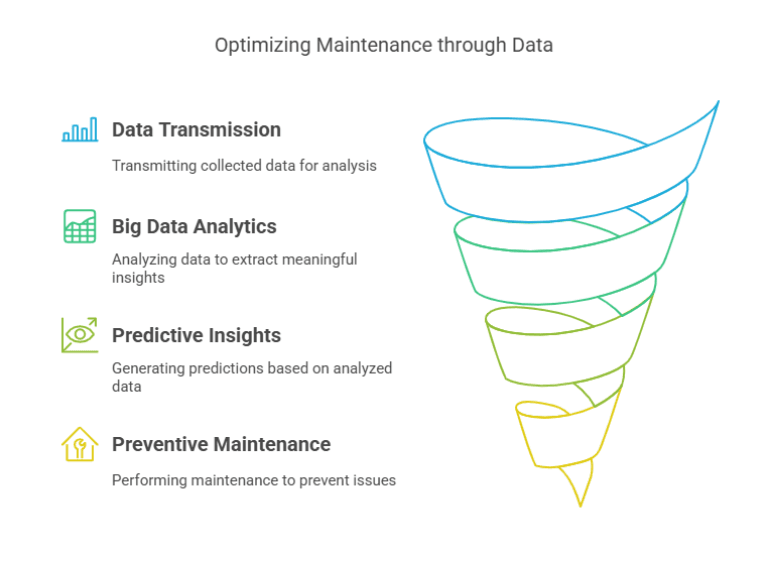
By implementing these real-time analytics solutions, DHL has improved delivery times while reducing operational costs.
Practical Applications of Big Data Analytics in Business
AI-Powered Forecasting for Business Growth
Machine learning and AI play a critical role in improving forecasting accuracy and automating business processes across industries:
- Healthcare: AI-driven diagnostics detect diseases early, enhancing patient outcomes and reducing treatment costs.
- Finance: Fraud detection algorithms analyze transaction patterns to prevent security breaches before they occur.
- Retail: Dynamic pricing models adjust prices in real-time based on market demand, competitor pricing, and inventory levels.
Discover how to implement big data strategies effectively for your business operations.
Digital Marketing Transformation Through Analytics
Marketing departments leverage big data analytics to optimize campaigns and improve ROI:
- Campaign Performance Analysis: Track cross-channel marketing performance in real-time to optimize budget allocation.
- Customer Journey Mapping: Identify touchpoints and conversion paths to create more effective marketing funnels.
- Sentiment Analysis: Monitor social media discussions to gauge brand perception and respond to emerging issues.
Google uses advanced analytics to help advertisers improve campaign performance by analyzing billions of data points and providing actionable insights through their Analytics platform.
Reducing Customer Churn with Predictive Insights
Customer retention is a key business challenge. Predictive analytics allows companies to detect early signs of customer churn and take proactive steps to retain valuable clients.
Telecom Industry Applications
Telecom providers analyze customer complaints, service usage trends, and network performance data to predict churn rates. By offering personalized discounts or improved service options before customers become dissatisfied, they significantly improve retention rates.
Vodafone implemented a predictive churn model that analyzes multiple variables to identify at-risk customers, helping reduce customer turnover and preserve revenue.
Retail Loyalty Optimization
Retailers segment customers based on purchase frequency, spending patterns, and engagement levels. This data-driven approach allows them to:
- Create targeted loyalty programs tailored to specific customer segments
- Develop personalized offers that increase repeat purchases
- Identify high-value customers for premium service treatment
- Reconnect with dormant customers through targeted re-engagement campaigns
Leveraging Business Intelligence for Market Trends
Business intelligence analytics provide valuable insights into shifting consumer behavior, competitive strategies, and revenue trends:
- Market Trend Analysis: Businesses track social media engagement and online search trends to predict emerging consumer interests and adapt product development.
- Revenue Forecasting: Companies optimize pricing and promotional strategies using data-backed sales predictions, increasing profit margins.
- Competitive Intelligence: Organizations monitor competitor strategies and market positioning to identify opportunities and threats.
How to Maximize the Benefits of Big Data Analytics
Choosing the Right Analytics Tools
Selecting the appropriate business analytics solutions is crucial for generating accurate insights. Here's a detailed comparison of leading tools and when to use them:
- Google BigQuery:
- Best for: Organizations with massive datasets requiring complex queries and real-time analysis
- Key strengths: Serverless architecture, scalability, machine learning integration, pay-per-query pricing
- Limitations: Steeper learning curve, requires SQL knowledge
- Ideal users: Large enterprises with data science teams and cloud-first strategies
- Microsoft Power BI:
- Best for: Organizations already using Microsoft ecosystem (Office 365, Azure)
- Key strengths: User-friendly interface, excellent data visualization, seamless integration with Excel
- Limitations: Less powerful for very large datasets compared to dedicated big data tools
- Ideal users: Mid-sized businesses with existing Microsoft infrastructure
- Tableau:
- Best for: Organizations prioritizing data visualization and dashboard creation
- Key strengths: Industry-leading visualization capabilities, intuitive drag-and-drop interface
- Limitations: Higher cost, less powerful for complex data processing
- Ideal users: Businesses needing to communicate data insights to non-technical stakeholders
- SAS Analytics:
- Best for: Financial services, healthcare, and other regulated industries
- Key strengths: Advanced statistical analysis, regulatory compliance features, robust security
- Limitations: Higher cost, steeper learning curve
- Ideal users: Enterprise organizations with complex compliance requirements
- Low-Cost Solutions for Small Businesses:
- Zoho Analytics: Affordable with good visualization capabilities
- Qlik Sense Business: Reasonably priced with strong associative data modeling
- Domo: Scalable platform with transparent pricing for growing businesses
- Open-source options: R with Shiny, Python with Dash for businesses with some technical expertise
Integrating Analytics into Existing Business Infrastructure
Successfully implementing business analytics solutions requires thoughtful integration with your current systems and processes:
AI-Powered Analytics Integration with CRM Systems
Combining AI for data analytics with CRM platforms creates powerful synergies:
- Salesforce Einstein Integration: Enhances lead scoring, opportunity insights, and forecasting accuracy
- Microsoft Dynamics 365 + Power BI: Creates unified customer views with predictive sales insights
- HubSpot + Third-Party Analytics: Improves campaign attribution and customer journey analysis
Implementation strategies include:
- Starting with API-based integrations between existing systems
- Implementing data lakes to centralize information from disparate sources
- Using ETL (Extract, Transform, Load) tools to ensure data consistency across platforms
Getting Started Without an Internal Data Science Team
Many businesses can leverage advanced analytics without dedicated data scientists:
- Data Analytics Consulting: Partner with specialized firms like Pinta WebWare for implementation and training
- Managed Analytics Services: Utilize third-party expertise to build and maintain your analytics infrastructure
- Low-Code/No-Code Platforms: Employ user-friendly tools that require minimal technical expertise
- Analytics-as-a-Service: Subscribe to cloud-based solutions with built-in expertise and support
Automation of Analytics Processes
Modern data analytics platforms offer automation capabilities that streamline analysis:
- Automated Data Collection: Implement APIs and data connectors to automatically gather information from multiple sources.
- Scheduled Reporting: Set up recurring reports to keep stakeholders informed without manual intervention.
- Automated Alerts: Configure notifications for anomalies or when key metrics exceed predefined thresholds.
- Self-Service Analytics: Enable non-technical users to access and analyze data through intuitive interfaces.
Building a Data-Driven Culture in Your Organization
For big data analytics to be effective, organizations must integrate data-driven decision-making across all teams:
- Employee Training: Implement data literacy programs to empower employees to interpret analytics correctly and make informed decisions.
- Cross-Department Collaboration: Share insights across departments to align strategies and improve operational efficiency.
- Leadership Buy-In: Ensure executive sponsorship for data initiatives to secure necessary resources and drive organizational change.
- Metrics-Based Performance: Establish clear KPIs based on data insights to measure success and drive accountability.
Strengthening Data Security and Compliance
With increased reliance on data, businesses must ensure regulatory compliance and cybersecurity:
- Use end-to-end encryption to protect sensitive customer data during collection, storage, and analysis.
- Follow industry standards such as GDPR, HIPAA, and CCPA to maintain data privacy and avoid costly penalties.
- Implement AI-driven threat detection systems to prevent cyberattacks and unauthorized data access.
- Establish clear data governance policies to ensure consistent data quality and appropriate usage.
Is Your Business Ready for Big Data Analytics?
To determine whether your organization can benefit from business analytics solutions, consider these questions:
- Are you making data-driven decisions, or still relying primarily on intuition?
- Do you have valuable customer data that is not being used effectively?
- Would predictive analytics improve your forecasting capabilities and operational efficiency?
- Are you struggling to track and anticipate market trends?
- Could AI-powered analytics enhance your customer engagement and marketing strategies?
If you answered "Yes" to three or more questions, your business is ready to implement big data analytics for better performance and growth.

Conclusion
Unlocking Growth with Big Data Analytics
Businesses that adopt big data analytics, AI-driven predictive insights, and real-time intelligence gain a significant competitive advantage in today's digital economy. From streamlining operations to improving customer experiences, data-driven decision-making is the foundation of sustainable business growth.
As data volumes continue to grow exponentially, organizations that effectively harness these insights will be positioned to outperform competitors, identify new opportunities, and adapt quickly to changing market conditions.
Ready to transform your business with data analytics? Contact Pinta WebWare for expert data analytics consulting and implementation services that can help you turn your raw data into actionable business insights.